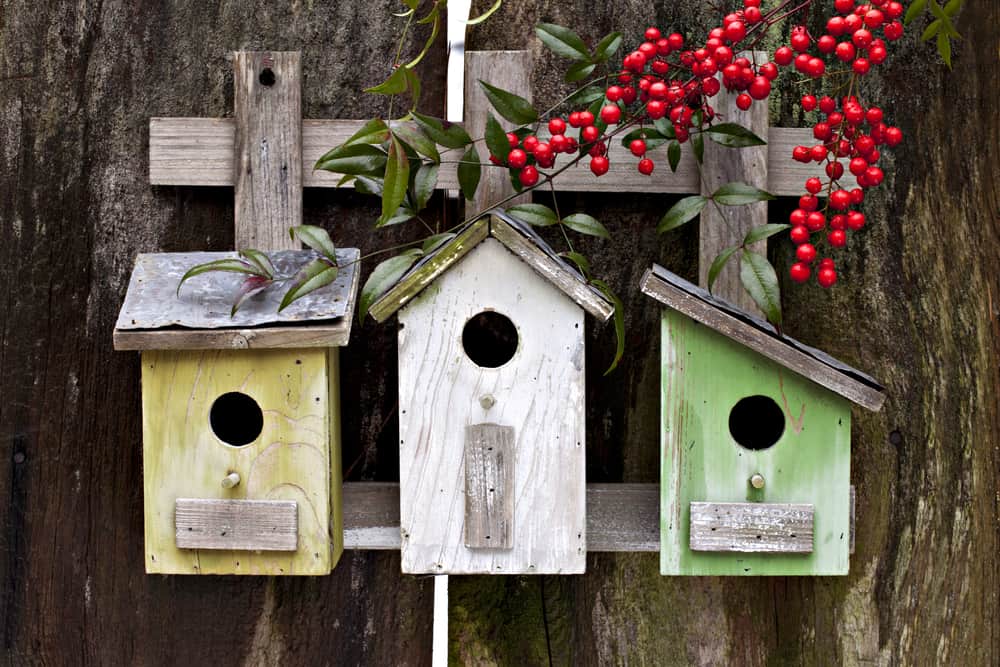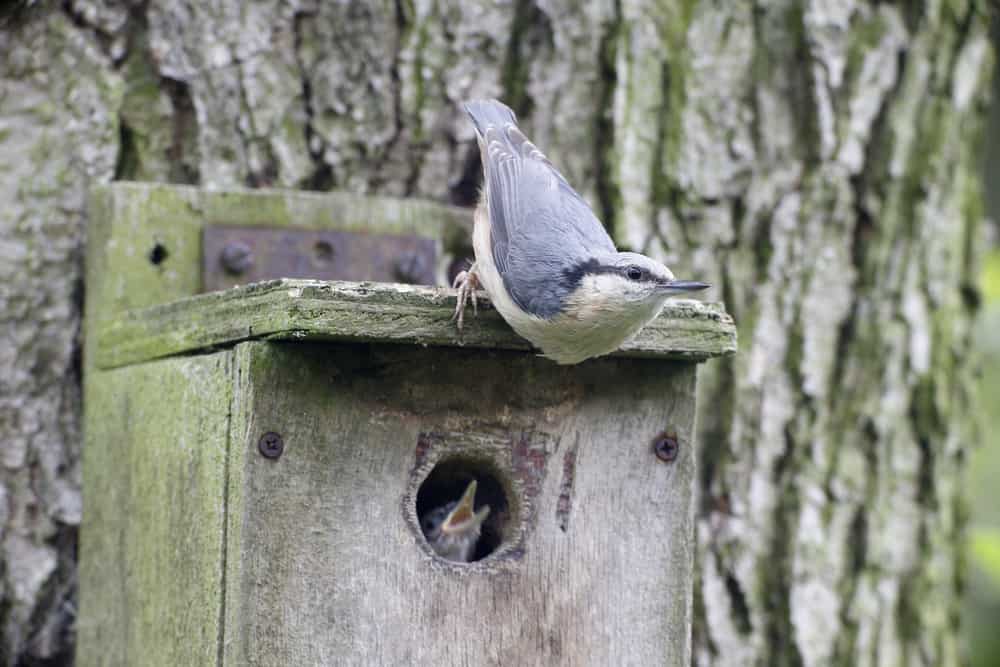
If you’re looking to attract some new feathery neighbours to your garden, why not try building your own nestbox? The prospect of putting together a well constructed nestbox on your own might seem daunting, but it is an easy project to tackle even if you don’t have advance carpentry skills. Become a host to a bird family of your own by building them a safe haven in your garden.
What items will I need?
- Untreated wood (such as pine, cedar, cypress or fir). Good quality wood means your nestbox will be sturdy and well constructed. Wood thickness should be at least 15 mms. NOTE: Materials such as plastic and metal can cause overheating.
- Pictures/diagrams of nestboxes to base your construction on (these can be found on this post).
- Good quality screws (galvanised screws get the best seal and also last longer and do not rust over time).

What should I considered before building?
- Easy access to allow regular cleaning. Install a lid on the top with a catch that can be opened.
- Sloped roof to keep out the predators and the rain.
- An entrance hole located at the top of the nestbox.
- Avoid adding a perch. Perches can allow predators to disturb your bird family.
- A couple of holes in the bottom to enable quick draining in case any water does manage to get in.
- Rough interior walls (this helps the nestling youngsters to climb out of the nestbox).
- The size of the entrance hole depends on the kind of bird you want to attract (25 mms or larger for Blue,
Marsh and Coal Tit , 28 mms or larger for Tree Sparrow and Great Tit; 32 mms for House Sparrow). - For larger birds (such as Pied Wagtails and Robins) nestboxes should be open fronted.

Rememeber – it’s all about location!
The placement of the nestbox is crucial otherwise all your efforts will be futile and it will remain empty.
- Do not place your nestbox in direct sunlight and make sure you shield it from the wind. Position your nestbox slightly downwards to prevent the rain from getting in.
- The nestbox should be placed some 3 meters from the ground to encourage birds to use it and feel safe enough from ground predators.
- Place the nestbox in a location that offers clear unobstructed path so that the birds can fly in.
- Avoid putting the nestbox close to another nestbox or close to a bird feeder. You don’t want other birds disturbing the box.
Finally – make sure you’re always a good host!
Keep an eye out on your nestbox and don’t forget the yearly maintenance – open it up once a year and clean it out with boiling water (this gets rid of any parasites and eliminates the smell of any birds that may have used it and have now moved on).



